Designers including Mona Chalabi and Black Artists + Designers Guild have created installations focusing on the design of the home for the Making Home exhibition at the Cooper Hewitt Design Museum.
Presented throughout the New York City institution – the former mansion of 19th-century industrialist Andrew Carnegie – the Making Home Smithsonian Design Triennial exhibition looked at the home as a framework incorporating different cultural and environmental contexts.
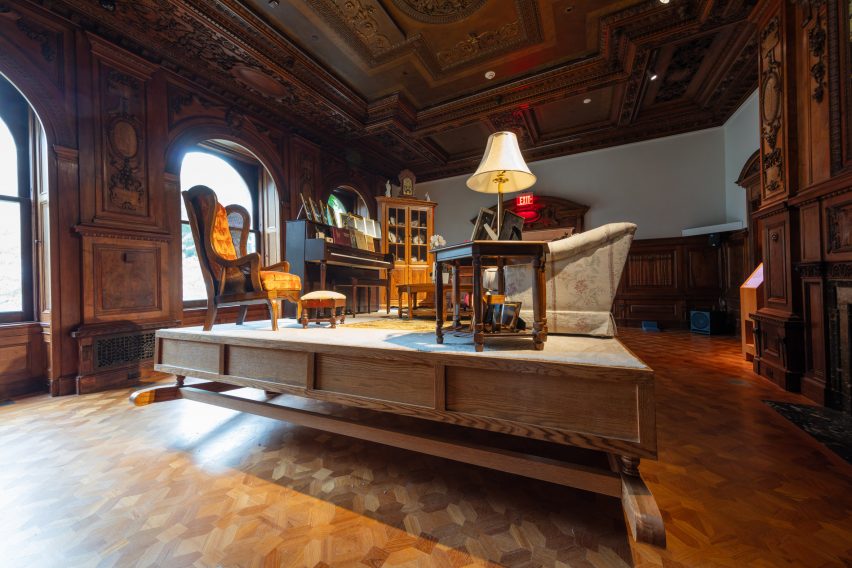
Cooper Hewitt’s seventh triennial exhibition, Making Home was developed by curator of contemporary design Alexandra Cunningham Cameron in partnership with associate curator of Latino design Christina L De León and Michelle Joan Wilkinson, supervisory museum curator at the National Museum of African American History and Culture.
“The theme originated as a desire to use an extremely relatable topic – home – as a lens for exploring design in its most expansive terms,” Cunningham Cameron said. “The exhibition covers a range of work from product design to medical systems to preservation to spiritual practices.”
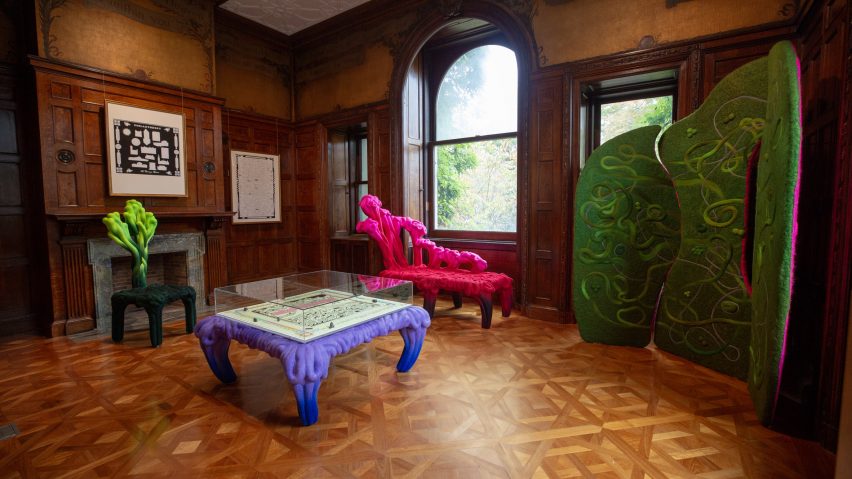
“The designers and artists in the show developed their commissions by considering design in active terms, as an iterative process rather than a finite solution,” she added.
Many of the projects on view demonstrate how design adapts over time in response to historical and cultural shifts as well as innovation, imagination and need.
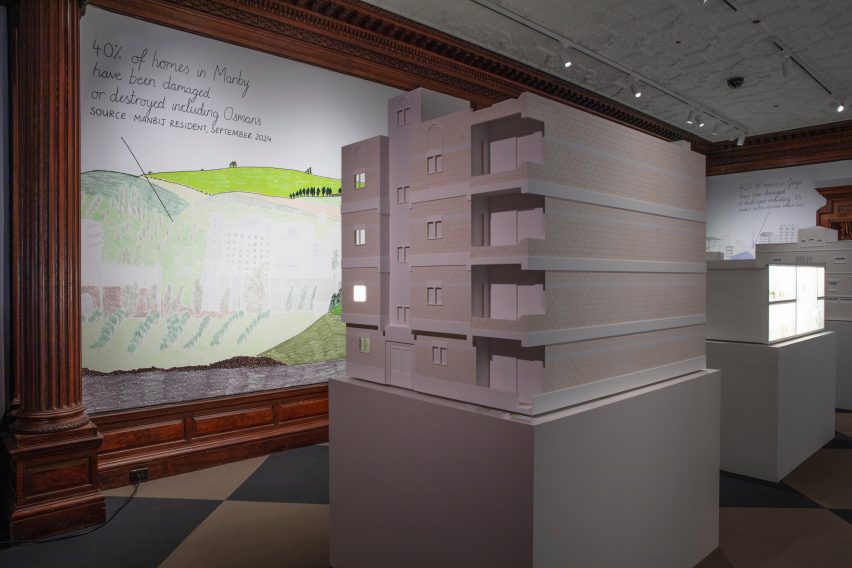
The exhibition was broken down into three sections including Going Home, Seeking Home and Building Home.
The Going Home portion of the exhibit displayed projects that reveal how people are shaped by domestic space.
Hugh Hayden‘s Living Room, Orlean, Virginia piece reconstituted the home of bass-baritone Davóne Tines and placed it on a rocking plinth to comment on the tension between conformity and precarity currently being experienced throughout the United States.
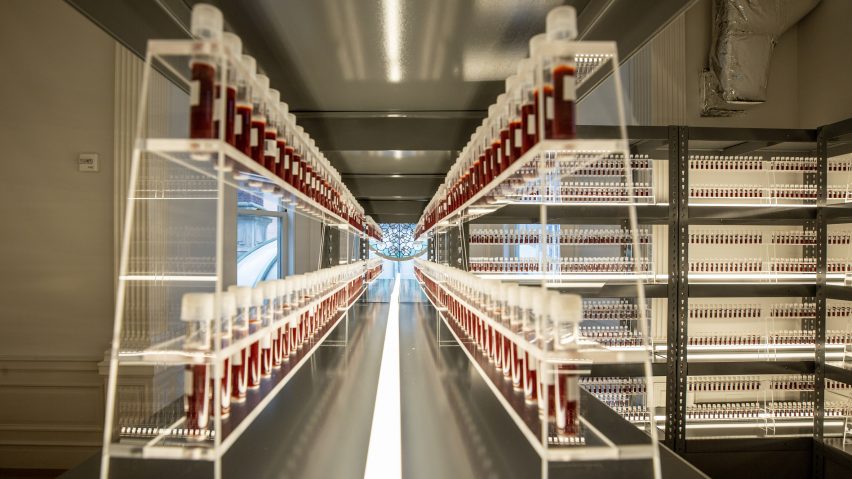
Several of the projects responded to the immediate context of the historical mansion.
With the Underground Library: An Archive of our Truth project, design collective Black Artists + Designers Guild re-stocked its library with books and contemporary furniture designs that presented a comprehensive overview of Black history and culture.
Liam Lee and Tommy Mishima‘s Game Room installation recontextualized Carnegie’s former study with reinterpreted office furniture and infographics mapping his influence.
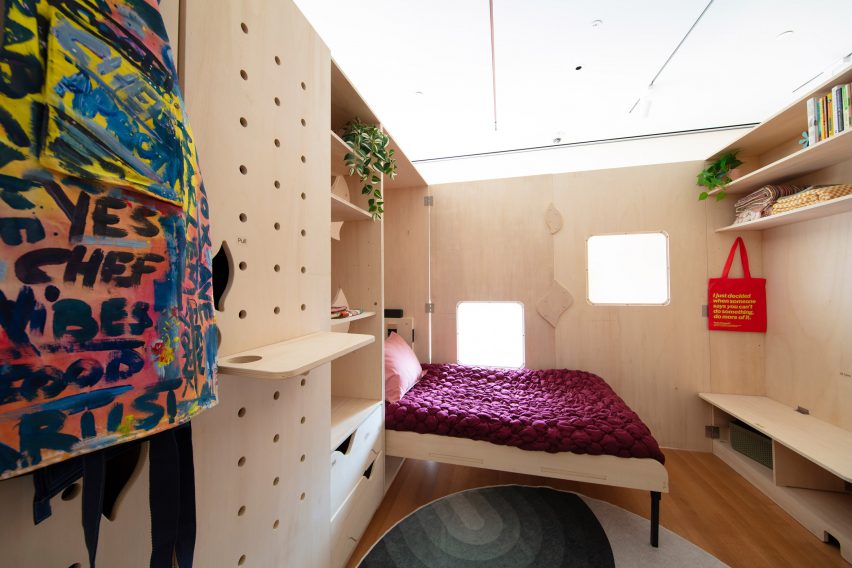
The visual identity of Making Home was developed by Office Ben Ganz, with exhibition design by architecture firm Johnston Marklee.
The studio drew inspiration from the location by reinterpreting decorative elements from the late 19th century and re-introducing them as graphic components.
“Each of the artists, architects and designers we chose to commission shared proposals for their installations and we worked very closely with them as they developed over the course of nearly two years,” De León said.
“As the curators, we did not define home but instead invited everyone to explore ideas of home through their own point of view, which led to a range of ideas about what it constitutes.”
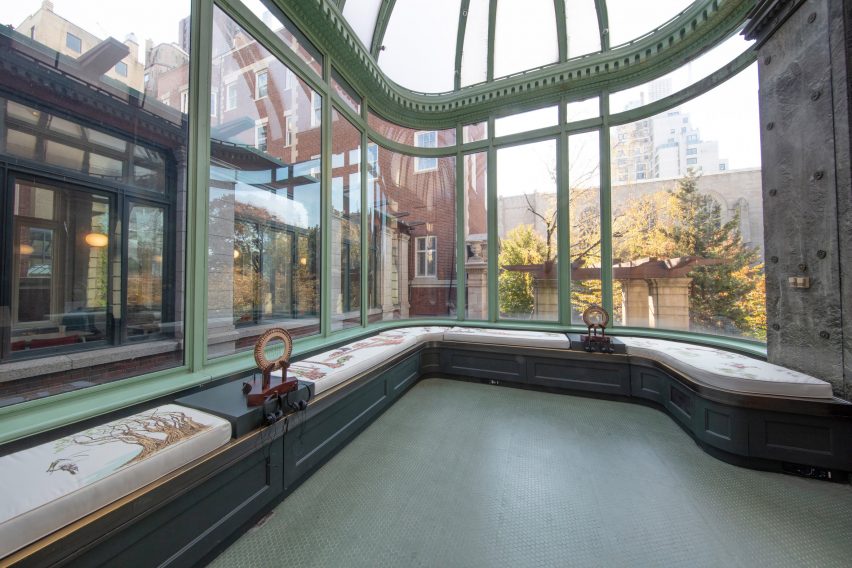
The Seeking Home section incorporated projects that address how various contexts and situations challenge the convention of what is often codified as home.
Through her SITU Research initiative, data journalist Mona Chalabi rendered the homes of three individuals destroyed by US-manufactured weapons used during airstrikes in Iraq, Syria and Palestine.
Chalabi’s Patterns of Life project incorporated infographics and building maquettes of the homes in question with paper cutouts of furnishings attached to back-lit semi-translucent scrims, suggesting that they no longer exist.
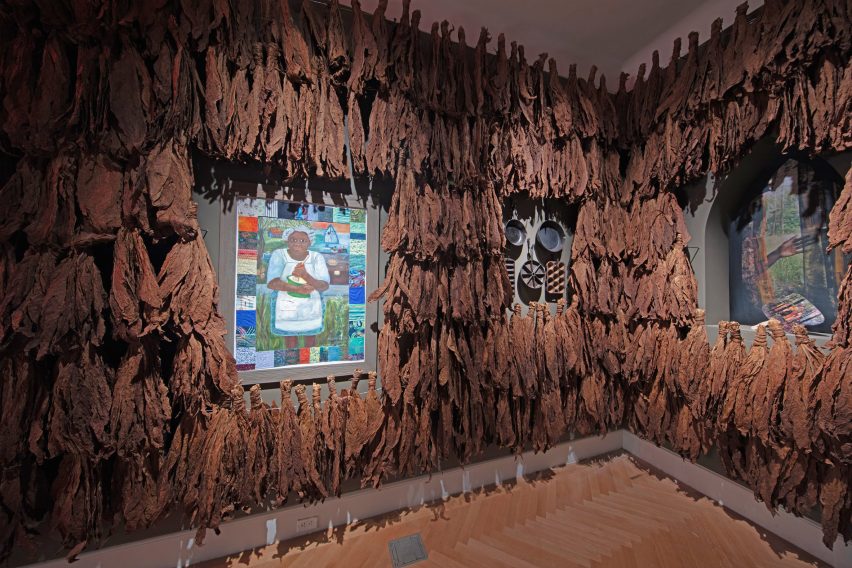
Sofía Gallisá Muriente and Natalia Lassalle-Morillo‘s The Unruly Subject installation – staged like a storage facility by theatre maker Carlos Soto – placed Indigenous artefacts found in Puerto Rico in the late 19th-century next to works by contemporary Puerto Rican talents.
Also on show was artist Heather Dewey-Hagborg‘s work Is a Biobank a Home? Displayed like a mock laboratory, it asked visitors to ponder the question asked by its name.
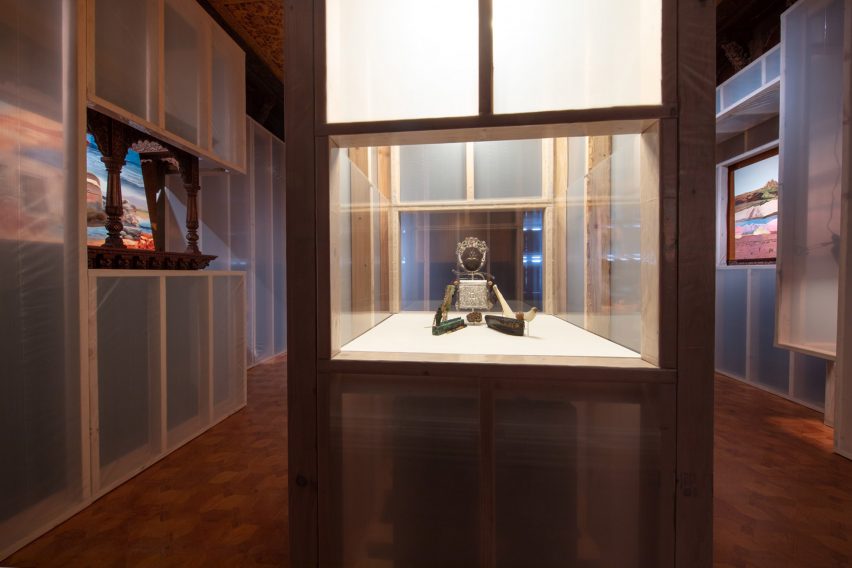
The Building Home section, meanwhile, looked at how residential architecture could evolve from traditional single-family developments to alternative models of living.
“From our first conversations together, we solidified a commitment to showing design in myriad forms,” said Wilkinson.
“We knew that some installations would look at design elements within home spaces, representing ideas about culture, heritage or aesthetics,” she added.
“However, we also felt it was important that the visitor encounter other facets of design beyond objects and decorative arts such as exploring social justice through the spectre of design.”
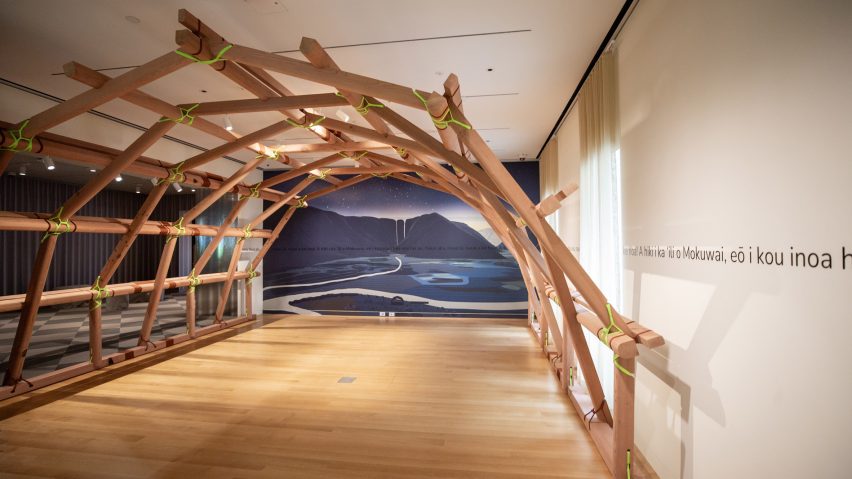
According to her, Designing Justice + Designing Spaces‘s The Architecture of Reentry project, a mobile refuge room prototype for individuals reentering communities from prison, is a good example of that thinking.
“Design is embedded in decisions that shape our commutes, our climate, our safety and security,” Wilkinson concluded.
“So, in considering the vastness of the role design plays in how we make home, we understood that we could not engage every facet of the domain, but we wanted to ensure that visitors to a design museum would encounter it in familiar and unfamiliar ways.”
Held in 2019, the previous Triennial was a “call to action” against climate change, while more recently, the museum showcased an exhibit dedicated to designer Es Devlin.
The photography is courtesy of the Cooper Hewitt Design Museum.
Making Home-Smithsonian Design Triennial is on show from November 2024 to 10 August 2025 in New York City. For more exhibitions, talks and fairs in architecture and design visit Dezeen Events Guide.










